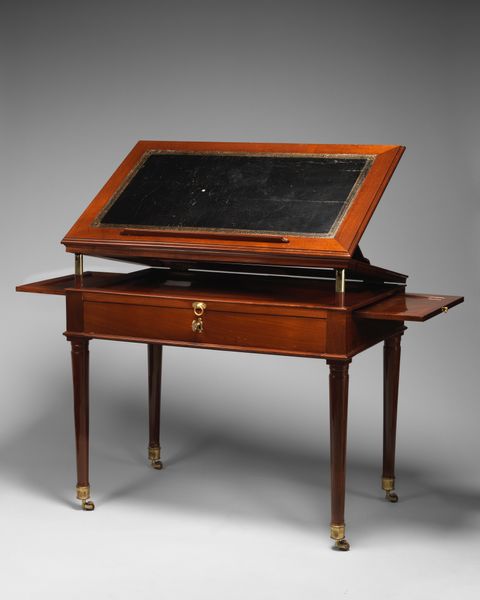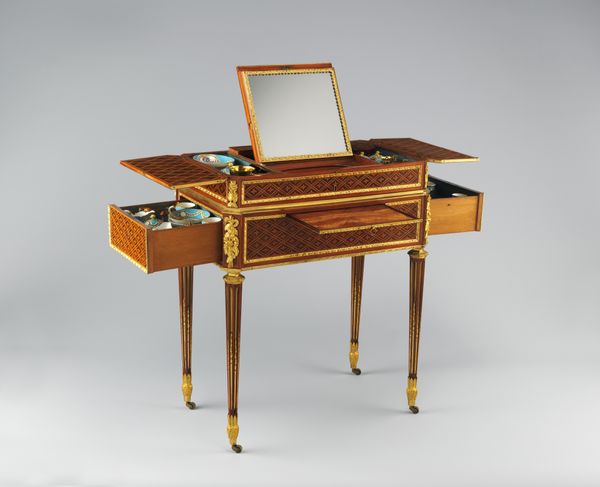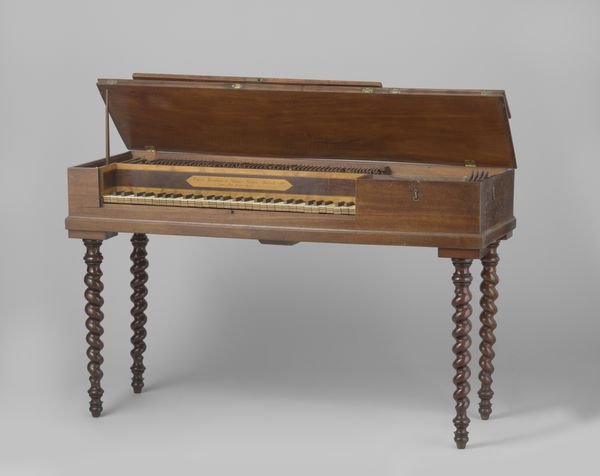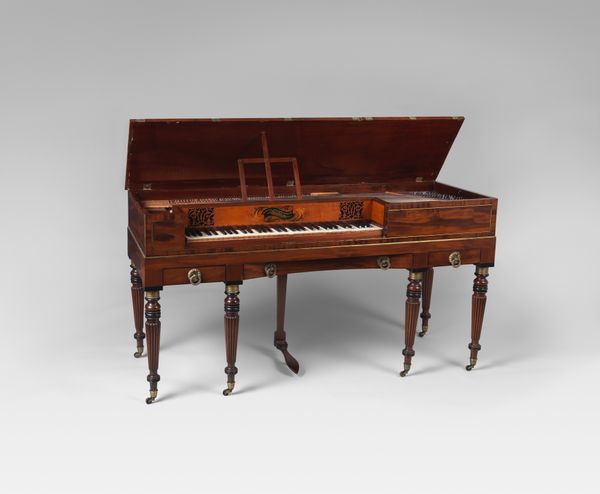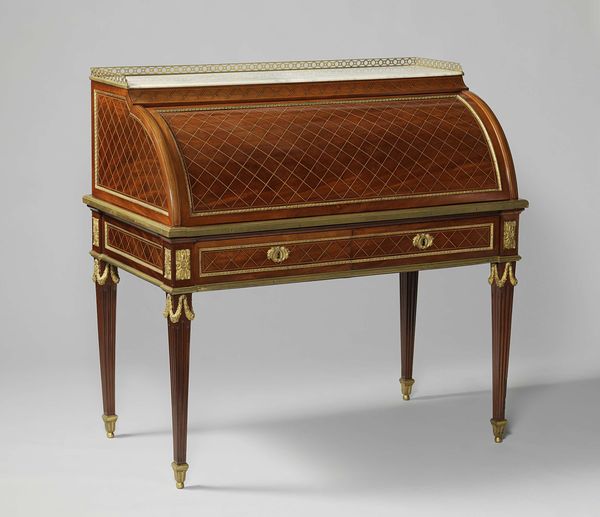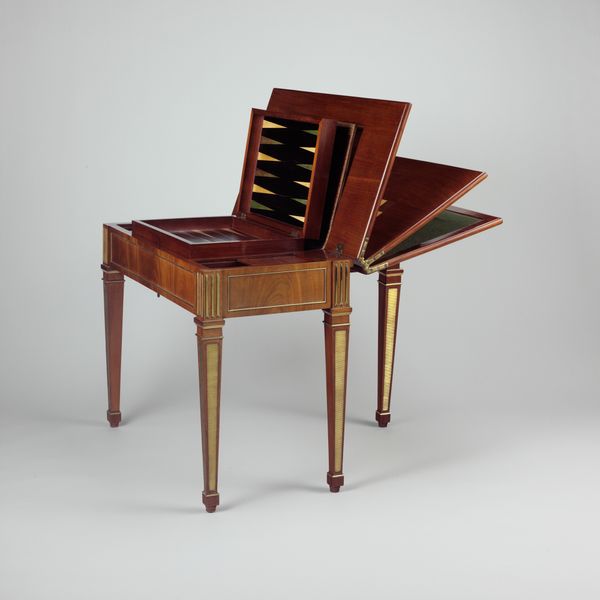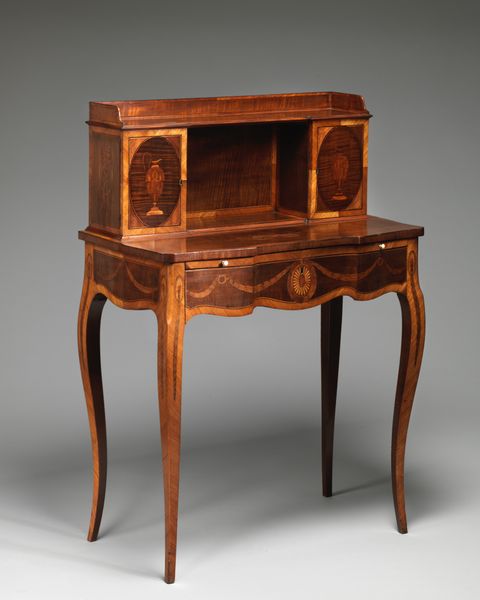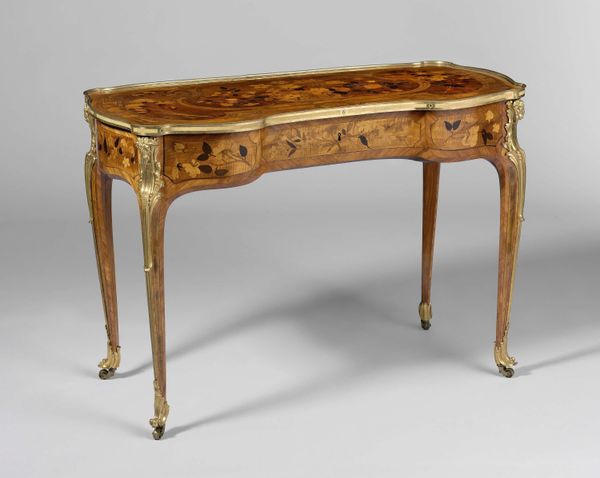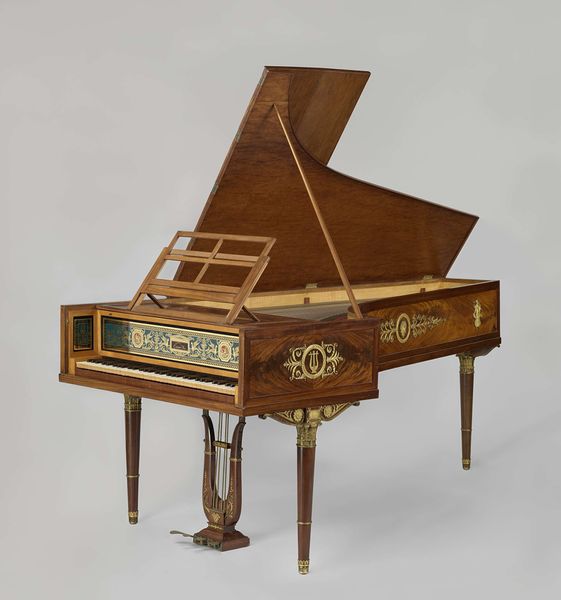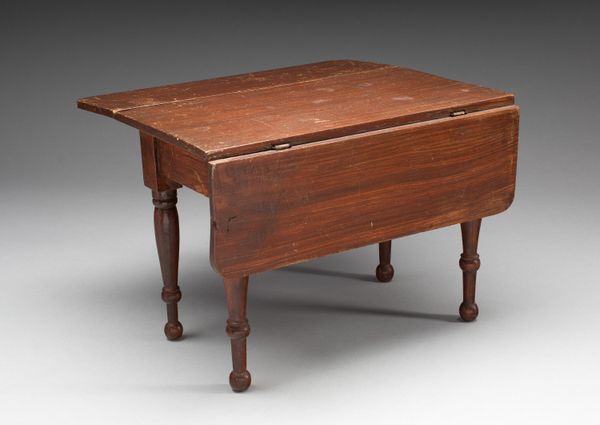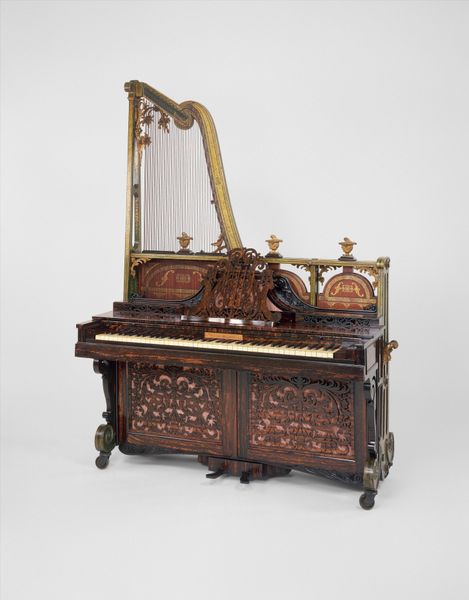
sculpture, wood
#
neoclacissism
#
furniture
#
classical-realism
#
sculpture
#
wood
#
decorative-art
#
architecture render
Dimensions: confirmed: 45 × 40 3/4 × 27 5/16 in. (114.3 × 103.5 × 69.4 cm)
Copyright: Public Domain
Editor: We’re looking at a rolltop desk, created between 1780 and 1790 by David Roentgen. It's currently held at the Metropolitan Museum of Art. It feels very stately, but also a bit compact. It uses very smooth curves, and pale colors... I'm curious, what visual cues can you gather from it? Curator: The curves and symmetry you've noticed are so vital! They are a clear signal towards Neoclassicism. This was a time of looking back to Greece and Rome, and borrowing heavily from their symbolism and the concept of Ideal Forms. Can you imagine this desk within a larger cultural context? What objects and architecture might surround it? Editor: I guess it could be surrounded by a white plaster sculpture on a plinth or Corinthian columns? I think I see what you mean. And I see that these kinds of forms carry emotional significance and project prestige and lasting stability. Curator: Precisely! It speaks to order, reason, and a harkening back to perceived Golden Ages. Think about what that signified politically, too, as these very concepts fueled revolutions and major social changes! So much of what's conveyed by a desk…! Now consider who owned and used this piece, and what statements they wished to convey. Editor: That’s fascinating. It is so much more than just furniture, but a powerful projection of status and values in a time of upheaval. Thanks so much. Curator: It’s been enlightening to share these impressions; there is always more to discover when observing art and design.
Comments
No comments
Be the first to comment and join the conversation on the ultimate creative platform.
